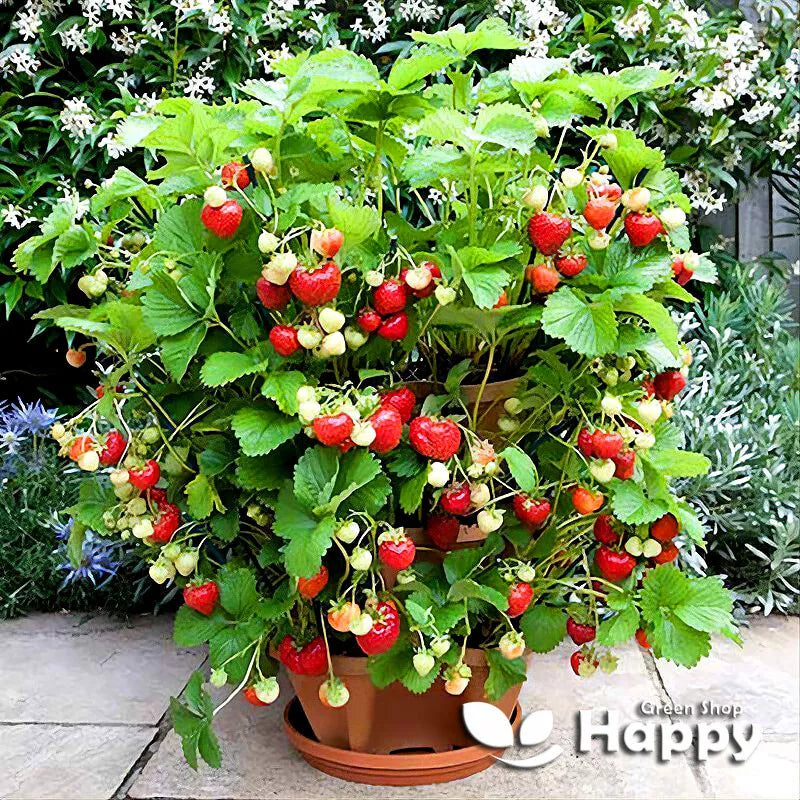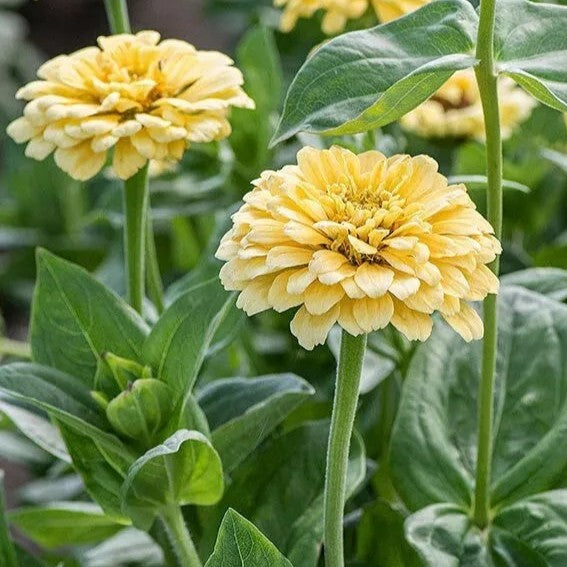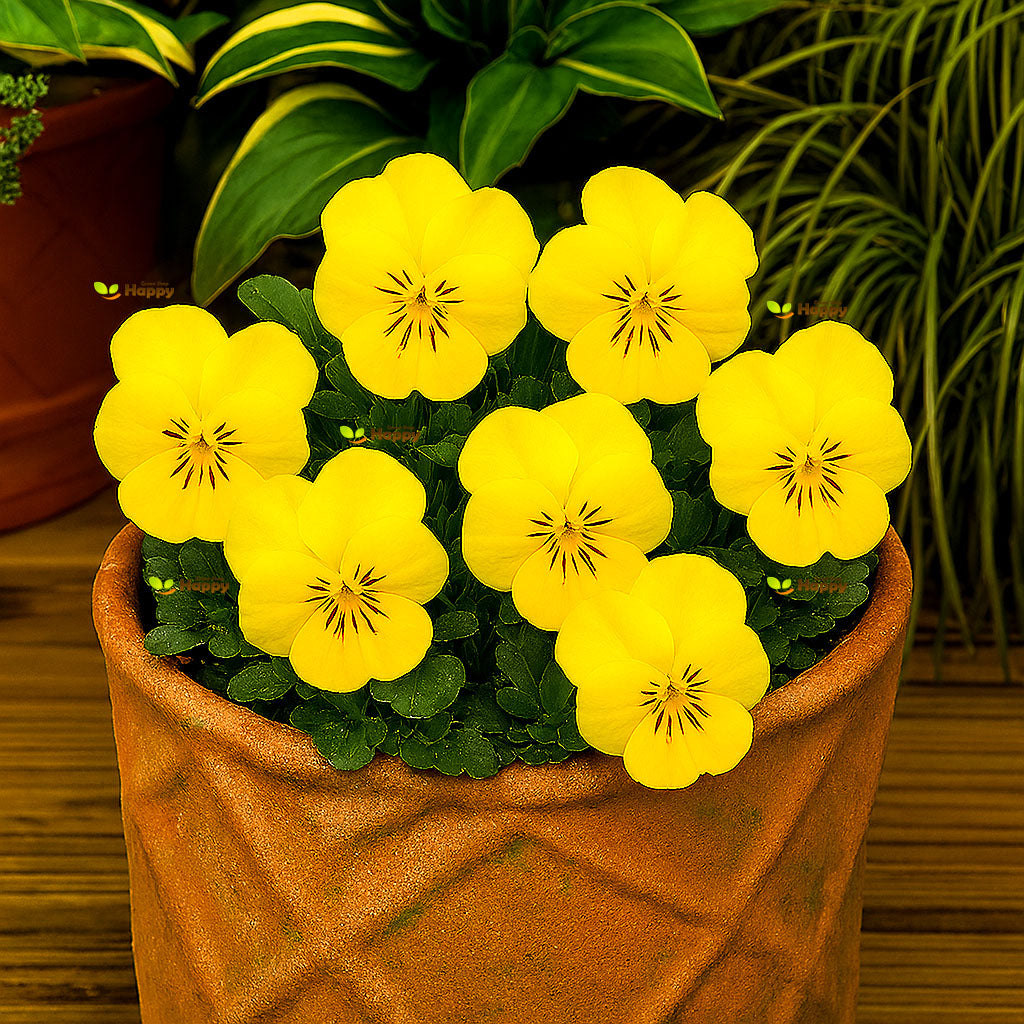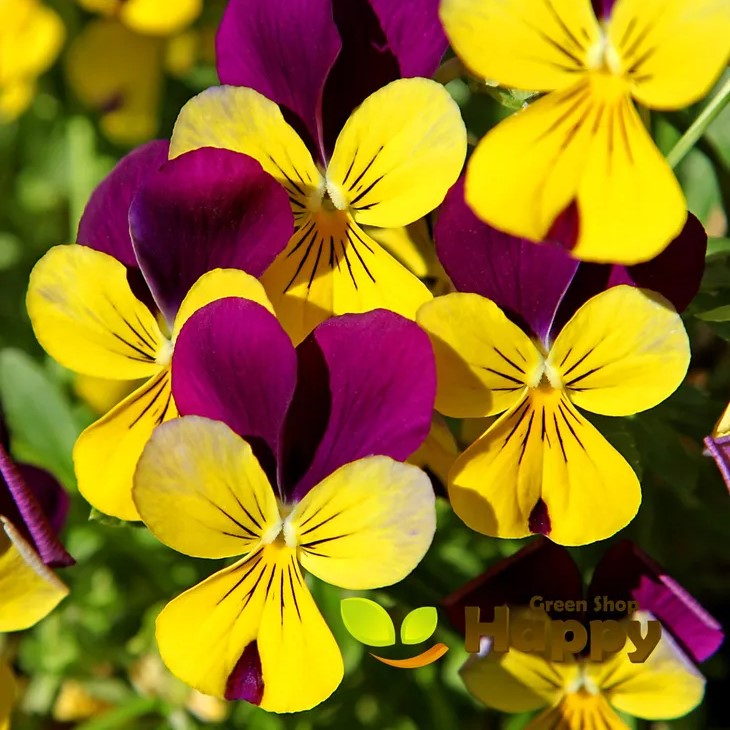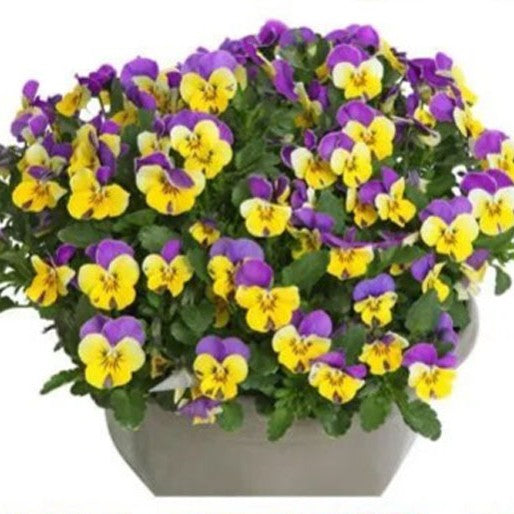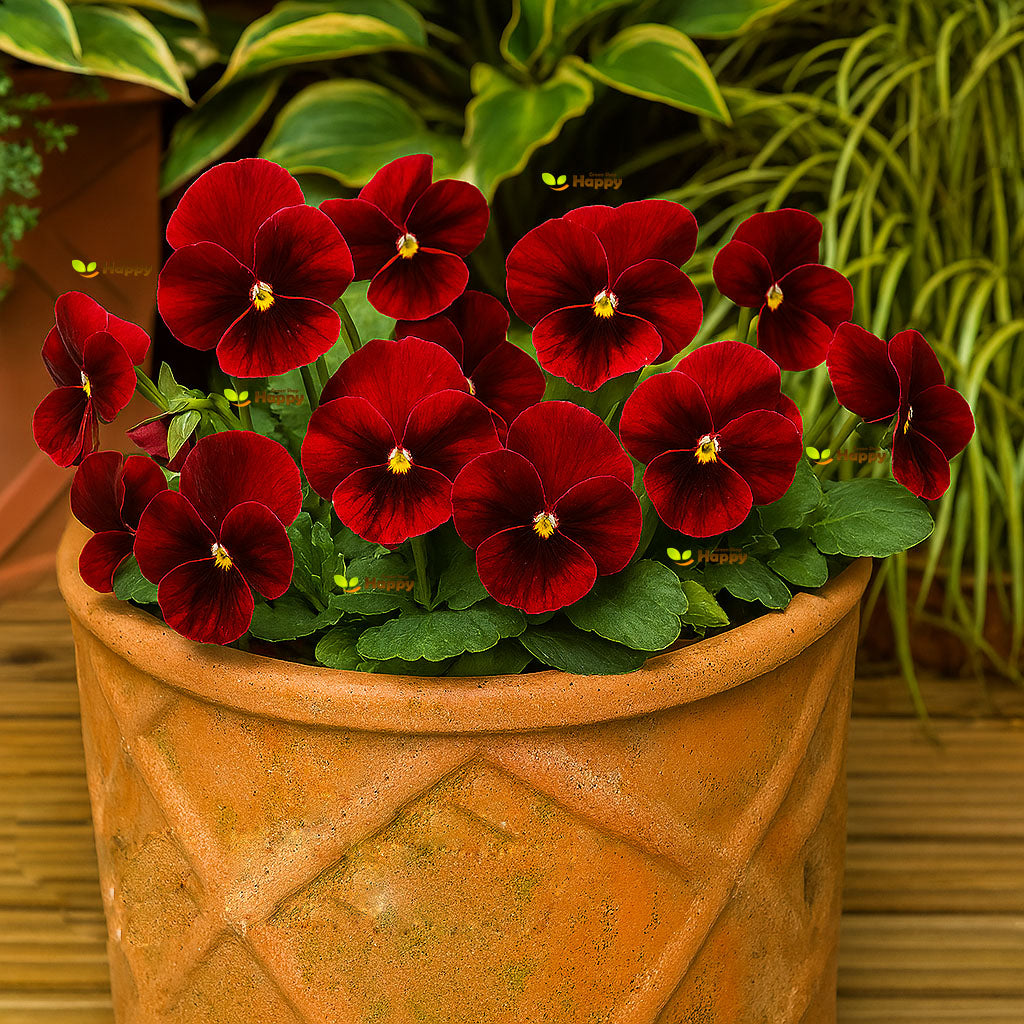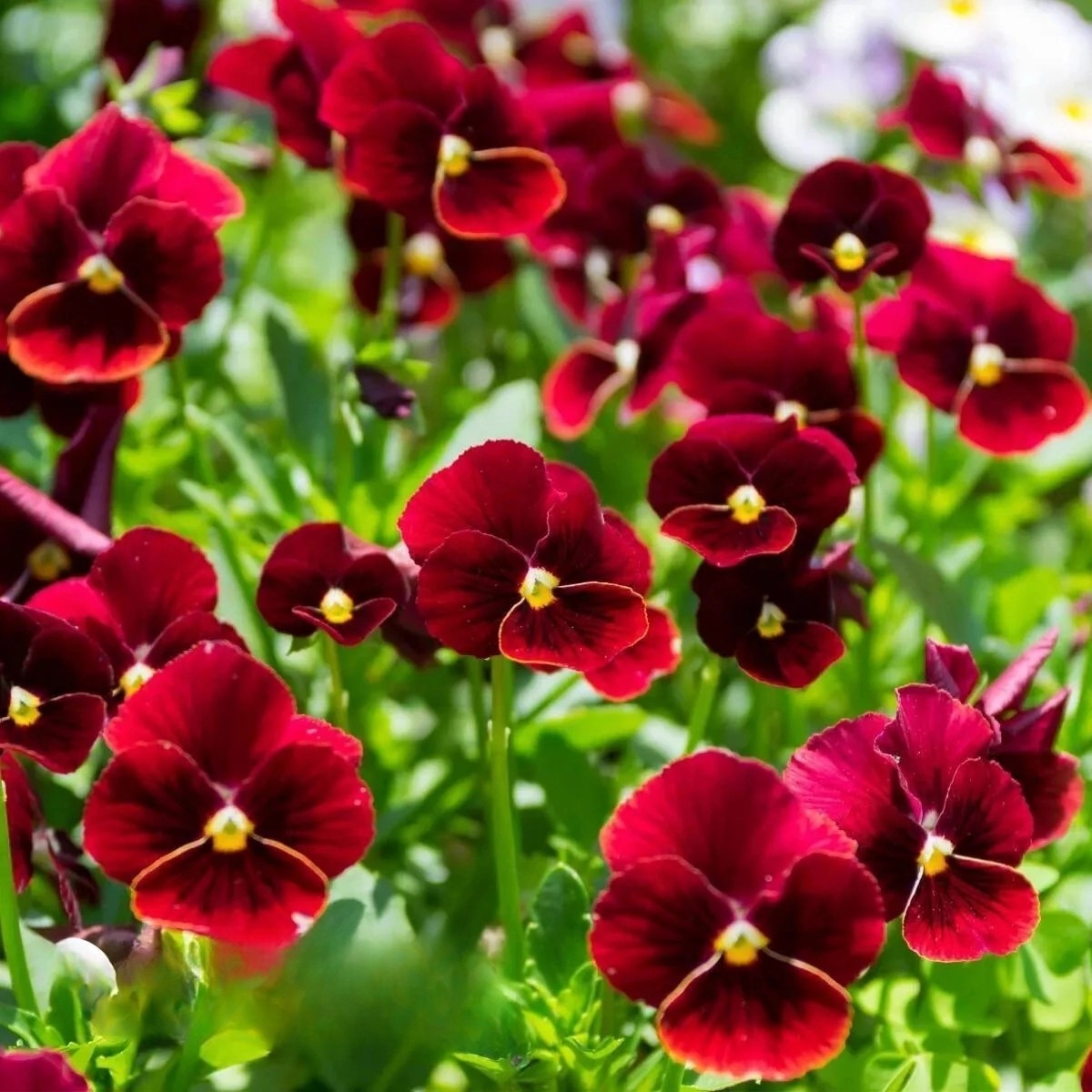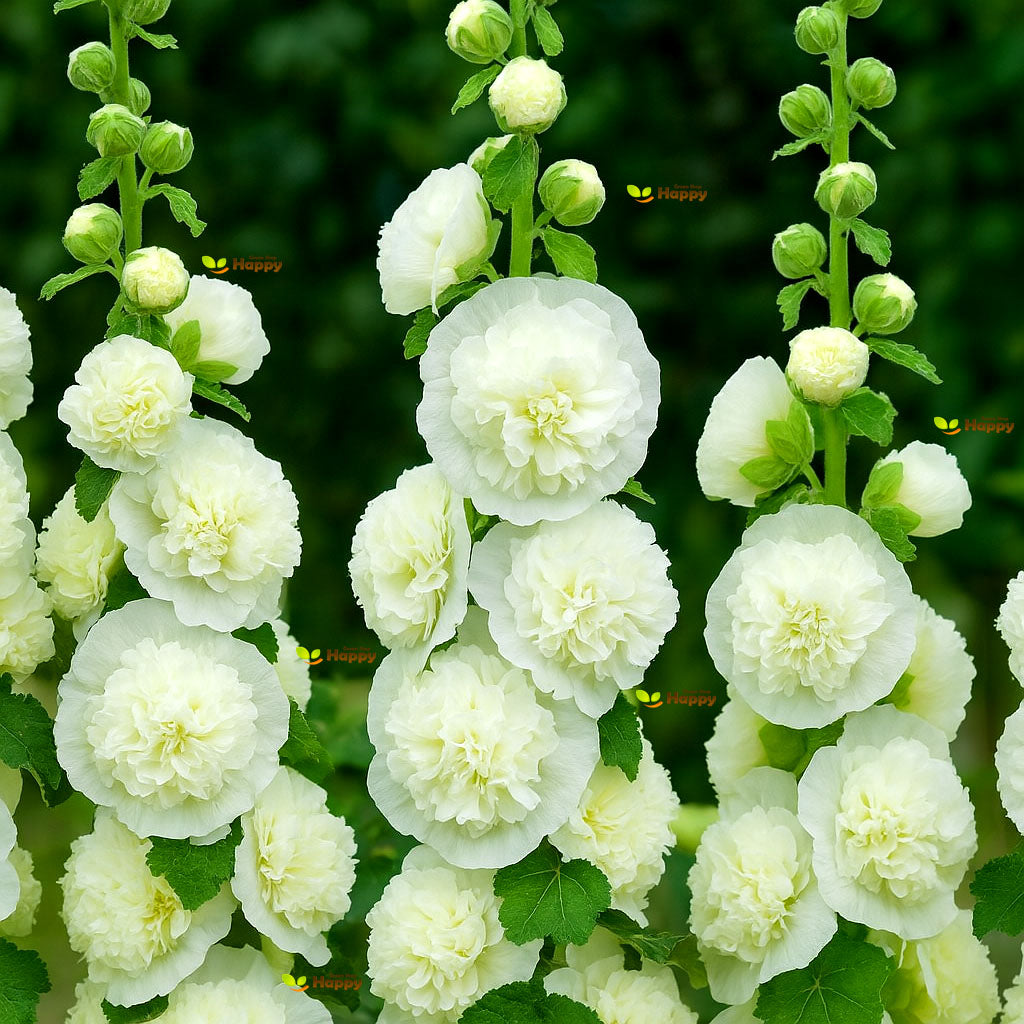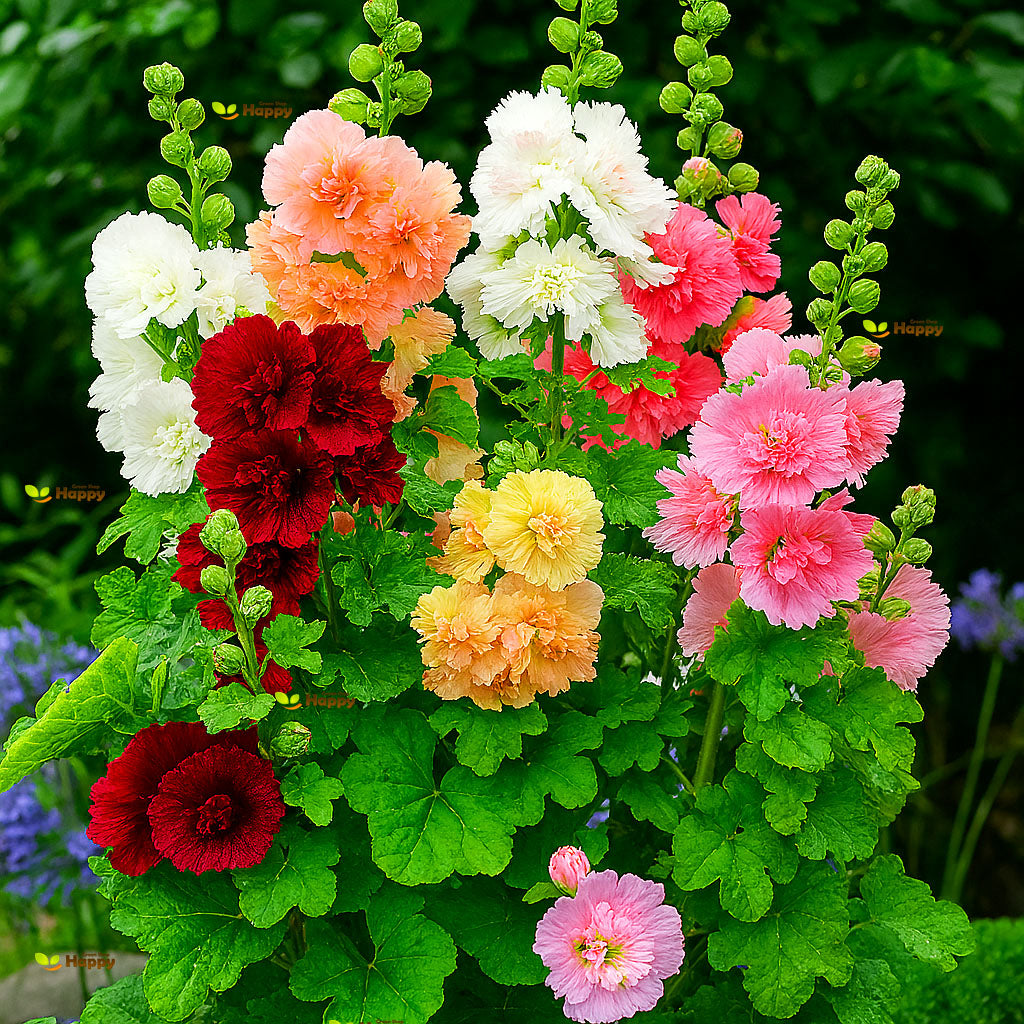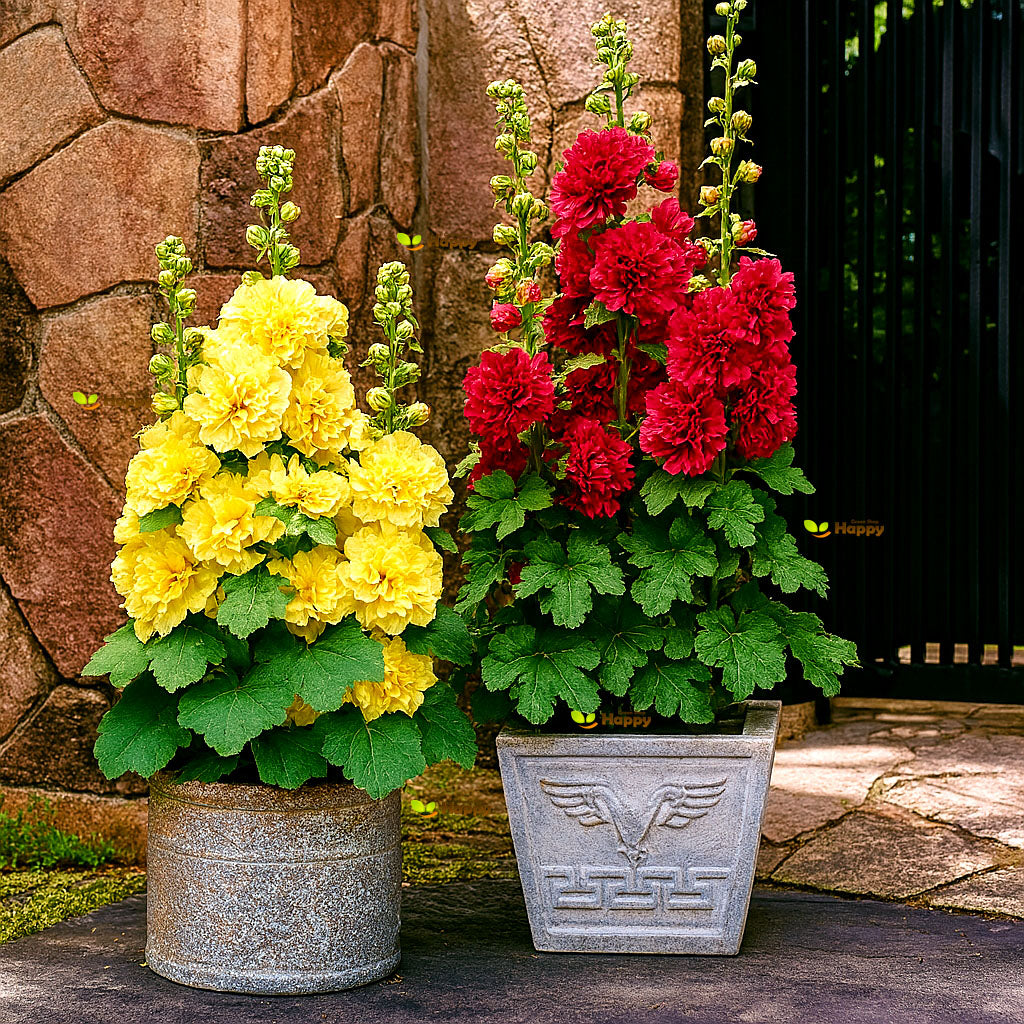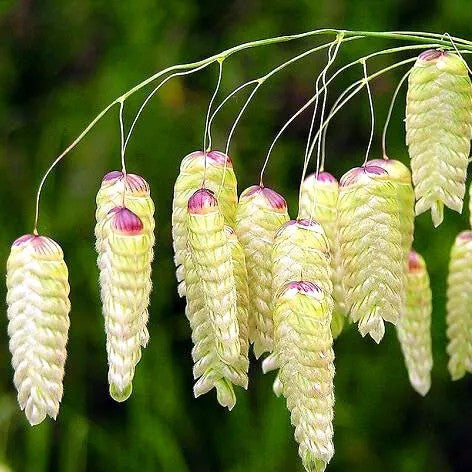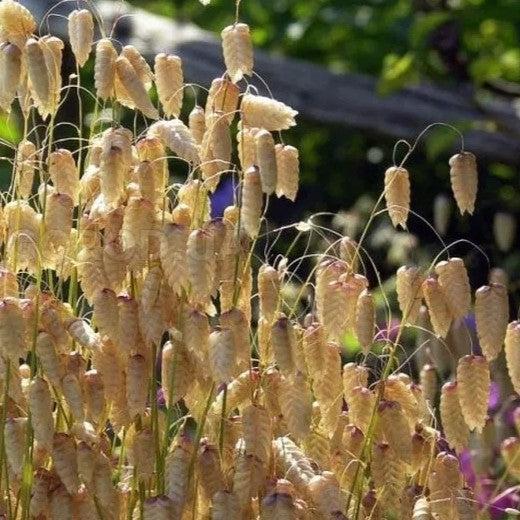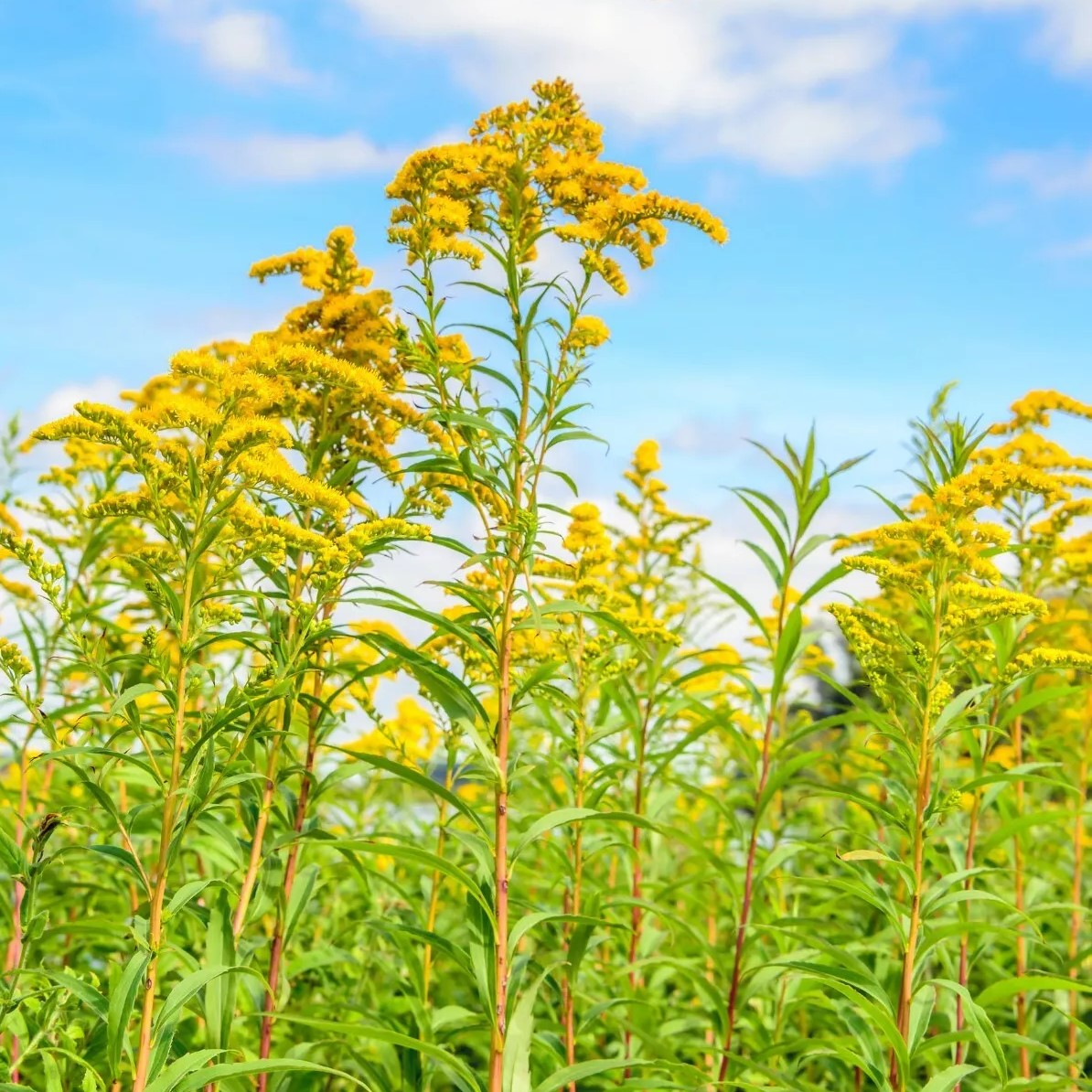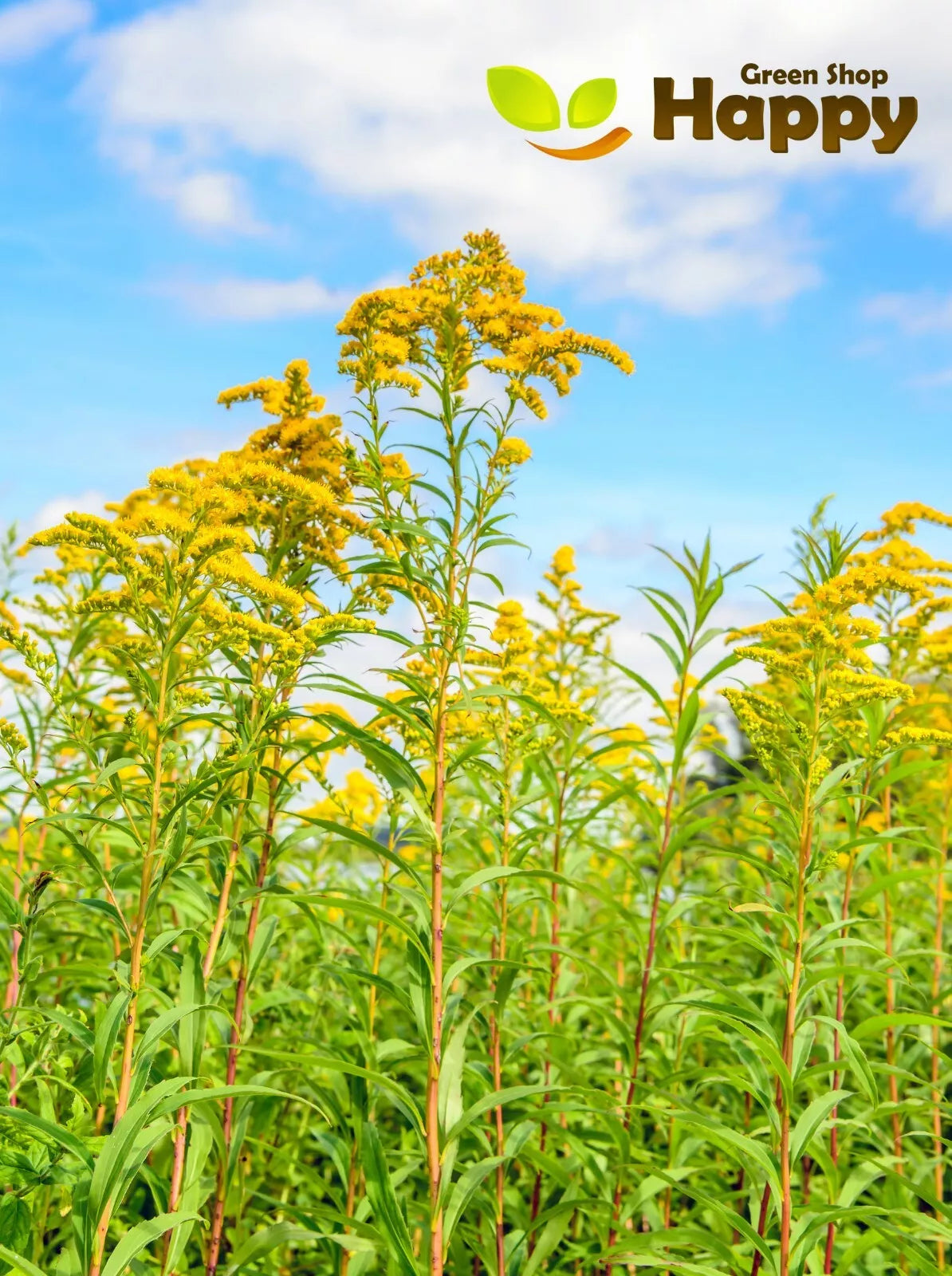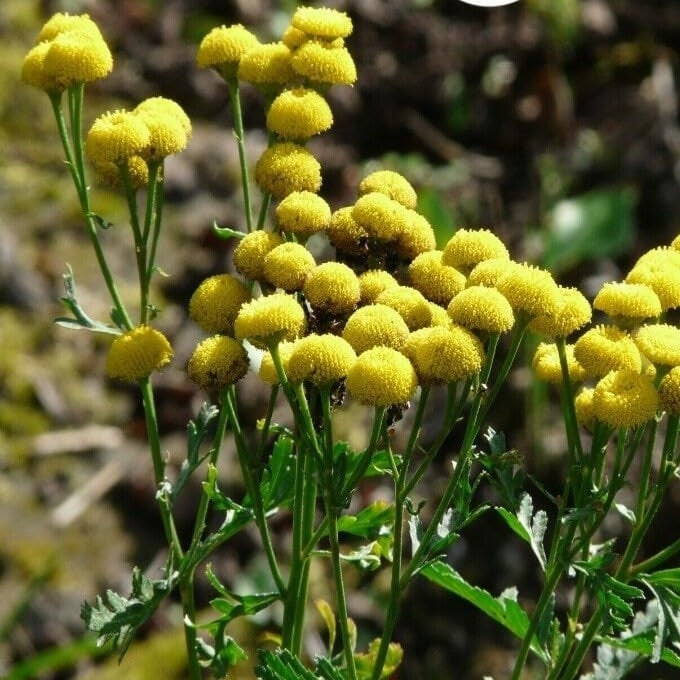Sort by:
287 products
287 products
Horned Pansy 'Prince John' Seeds (Viola cornuta)
The Horned Pansy 'Prince John' is a delightful heirloom variety of Viola cornuta, loved for its charming golden-yellow blooms with subtle shading. Compact and long-flowering, it’s ideal for brightening up borders, containers, and rock gardens with a cheerful splash of sunshine. Hardy and easy to grow, it also attracts pollinators to the garden.
What Makes It Special
-
Distinctive golden-yellow flowers
-
Hardy perennial (often grown as a biennial)
-
Perfect for naturalizing or cottage-style gardens
Key Features
-
Botanical name: Viola cornuta
-
Perennial (treated as biennial in some climates)
-
Height: 15–20 cm
-
Spread: 20–25 cm
-
Flowering: May–September
Ideal For
-
Cottage gardens and naturalized plantings
-
Borders, pots, and rockeries
-
Long-lasting displays from spring to autumn
Sowing
-
Sow indoors: February–April, cover lightly with compost
-
Germination: 10–21 days at 15–20°C
-
Transplant outdoors: after last frost, 20 cm apart
-
Prefers sun to partial shade and moist, well-drained soil
Horned Pansy 'John Jump Up' (Helen Mount) Seeds (Viola cornuta)
Bring charm and cheer to your garden with the classic Horned Pansy 'John Jump Up', also known as Helen Mount. This historic variety produces petite blooms with vibrant deep violet-purple petals, bright yellow centers, and soft lilac highlights. Perfect for naturalizing, borders, or cottage-style gardens, these hardy perennials bloom freely and reliably.
What Makes It Special
-
Distinctive tri-colored flowers with cheerful faces
-
Hardy, long-flowering perennial
-
Great for borders, containers, and ground cover
Key Features
-
Botanical name: Viola cornuta
-
Perennial (often grown as a biennial)
-
Height: 15–20 cm
-
Spread: 20–25 cm
-
Flowering: May–September
Ideal For
-
Borders, rock gardens, and cottage-style plantings
-
Naturalizing and long-lasting displays
-
Pollinator-friendly gardens
Sowing
-
Sow indoors: February–April, cover lightly with compost
-
Germination: 10–21 days at 15–20°C
-
Transplant outdoors: after last frost, 20 cm apart
-
Prefers sun to partial shade and moist, well-drained soil
Horned Pansy 'Arkwright Ruby' Seeds (Viola cornuta)
Add a touch of elegance to your garden with Horned Pansy 'Arkwright Ruby'. This charming perennial produces velvety deep ruby-red blooms with golden centers, creating a striking contrast. Compact and free-flowering, it’s ideal for borders, rockeries, containers, and bedding.
What Makes It Special
-
Rich ruby-red flowers with glowing yellow eyes
-
Long flowering season from spring into autumn
-
Hardy, compact, and easy to grow
Key Features
-
Botanical name: Viola cornuta
-
Hardy perennial, often grown as biennial
-
Height: 15–20 cm
-
Spread: 20 cm
-
Blooms: April–October
Ideal For
-
Bedding and containers
-
Rock gardens and edging
-
Pollinator-friendly displays
Sowing
-
Sow indoors: February–April or September–October
-
Cover seeds lightly; germination takes 14–21 days at 15–20°C
-
Transplant seedlings to sunny or part-shade positions
-
Flowers the following spring if autumn sown
Hollyhock Chaters Double Triumph White – Seeds (Althaea rosea)
Hollyhock Chaters Double Triumph White is a stunning biennial that produces tall spikes of pure white, double blooms. Its elegant flowers create a classic cottage garden look, ideal for borders, backdrops, and pollinator-friendly gardens. Easy to grow and long-lasting, this variety attracts bees and butterflies while adding height and drama to any garden space.
Why Grow "Chaters Double Triumph White"
-
Tall spikes of elegant, double white flowers
-
Long flowering season adds summer interest
-
Attracts pollinators, including bees and butterflies
-
Perfect for cottage garden style and borders
Key Features
-
Type: Biennial (Althaea rosea)
-
Height: 1.8–2.0 m
-
Flowering: Second year after sowing
-
Position: Full sun
-
Uses: Borders, backdrops, cottage gardens, pollinator planting
Ideal For
-
Creating dramatic vertical interest in borders
-
Cottage and mixed garden designs
-
Pollinator-friendly planting
-
Gardeners seeking classic, easy-to-grow hollyhocks
Sowing & Growing
-
Sow indoors: January–March
-
Sow outdoors: Directly in soil April–May
-
Germination: 14–21 days
-
Plant out after last frost, spacing 45–60 cm apart
-
Prefers full sun and well-drained soil
Hollyhock ‘Majorette Double’ Mix – Seeds (Althaea rosea)
The Hollyhock ‘Majorette Double’ Mix is a stunning dwarf variety producing fully double flowers in a wide range of colors, including pink, red, yellow, and white. Compact and bushy, it is perfect for smaller gardens, borders, and containers while still giving that classic cottage garden charm.
Why Grow ‘Majorette Double’?
-
Fully double blooms in a vibrant color mix
-
Shorter, dwarf habit compared to traditional tall hollyhocks
-
Long summer flowering season
-
Attracts bees and pollinators
Key Features
-
Type: Half-hardy biennial (often flowers in the first year)
-
Height: 60–80 cm
-
Flowering: June–September
-
Position: Full sun, well-drained soil
-
Uses: Borders, containers, cottage garden plantings
Ideal For
-
Smaller gardens and courtyards
-
Adding vertical interest without excessive height
-
Pollinator-friendly spaces
Sowing & Growing
-
Sow indoors: February–April in trays or pots
-
Sow outdoors: May–June directly in soil
-
Germination: 14–21 days at 18–20°C
-
Transplant seedlings 40–50 cm apart
-
Deadhead faded flowers for extended blooming
Greater Quaking Grass Seeds (Briza maxima)
Greater Quaking Grass is a graceful ornamental grass admired for its nodding, heart-shaped seed heads that tremble and quiver in the breeze. This charming annual grass adds both texture and movement to garden displays and is a favourite for cutting and drying. Its unique seed heads shift from fresh green to golden shades as they mature, making it a versatile choice for borders, meadows, containers, and dried flower arrangements.
What Makes It Special
-
Distinctive quaking, heart-shaped seed heads
-
Creates elegant movement and sound in the garden
-
Excellent for cutting and drying
-
Easy to grow in sunny, well-drained sites
Key Features
-
Botanical name: Briza maxima
-
Common name: Greater Quaking Grass
-
Seed count: Approx. seeds per pack
-
Height/Spread: 45–60 cm tall, 20–30 cm spread
-
Position: Full sun; light, well-drained soil
-
Flowering period: June–August
Ideal For
-
Borders and ornamental grass displays
-
Wildflower and naturalistic gardens
-
Patio containers
-
Cut and dried flower arrangements
-
Adding movement to mixed planting schemes
Sowing Instructions
-
When to sow: March–May indoors, or April–June outdoors directly
-
How to sow:
-
Sow thinly in trays of seed compost or directly outdoors in prepared soil
-
Lightly cover with fine soil or compost
-
Keep moist until germination (14–21 days)
-
-
Transplant/Thin: Space plants 20–30 cm apart
-
Care: Low maintenance. Harvest seed heads when fully formed for use in arrangements.
Golden Rod ‘Yellow Springs’ – 2000 Seeds (Solidago canadensis)
The Golden Rod ‘Yellow Springs’ is a hardy perennial that produces tall spikes of tiny golden-yellow flowers, creating a striking late-summer display. A magnet for bees and butterflies, it’s ideal for naturalistic gardens, meadows, and wildlife-friendly plantings. Easy to grow, drought-tolerant, and low-maintenance.
Why Grow ‘Yellow Springs’?
-
Tall, elegant spires of golden-yellow blooms
-
Attracts pollinators and supports biodiversity
-
Drought-tolerant and hardy perennial
-
Excellent for cut flowers and meadow planting
Key Features
-
Type: Perennial
-
Height: 100–150 cm
-
Flowering: July–September
-
Position: Full sun, well-drained soil
-
Uses: Borders, wildflower gardens, meadows, cut flowers
Ideal For
-
Pollinator-friendly gardens
-
Naturalized meadow plantings
-
Adding vertical height and late-season color
Sowing & Growing
-
Sow indoors: February–April, lightly cover seeds
-
Sow outdoors: April–June in prepared soil
-
Germination: 14–21 days at 18–22°C
-
Thin or transplant seedlings 30–40 cm apart
-
Cut back in autumn after flowering
Golden Buttons ‘Tansy’ – Seeds
(Tanacetum vulgare)
Golden Buttons ‘Tansy’ is a hardy perennial featuring clusters of bright golden-yellow button-like flowers atop tall stems. Its ferny foliage and long-lasting blooms make it ideal for borders, wildflower meadows, and pollinator-friendly gardens. Low-maintenance and drought-tolerant, it adds cheerful color and texture throughout summer.
Why Grow Golden Buttons ‘Tansy’?
-
Bright golden-yellow button-like flowers
-
Hardy, low-maintenance perennial
-
Attracts bees and butterflies
-
Ideal for borders, meadows, and pollinator gardens
Key Features
-
Type: Perennial
-
Height: 60–90 cm
-
Flowers: Summer
-
Position: Full sun
-
Soil: Well-drained, moderately fertile
Ideal For
-
Borders, wildflower meadows, and perennial beds
-
Pollinator-friendly gardens
-
Cut flower arrangements
-
Low-maintenance garden color
Sowing & Growing
-
Sow indoors: February–April in seed trays
-
Sow outdoors: April–May directly in prepared soil
-
Germination: 10–20 days at 18–20°C
-
Spacing: 30–40 cm apart
-
Care: Minimal; deadhead to prolong flowering and prevent self-seeding
Giant Sunflower ‘Sungold’ – Seeds (Helianthus annuus)
Description:
Brighten your garden with the stunning Giant Sunflower ‘Sungold’, a magnificent Helianthus annuus variety known for its large, fully double golden-yellow blooms. The fluffy, pom-pom-like flowers create a striking display that attracts bees, butterflies, and pollinators throughout the summer. Growing tall and strong, these sunflowers make excellent border plants or eye-catching cut flowers. Easy to grow and ideal for sunny spots.
Key Features
-
Large, double pom-pom golden-yellow blooms
-
Tall-growing, eye-catching annual
-
Long-lasting flowers that attract pollinators
-
Perfect for cutting and floral arrangements
-
Easy to grow from seed
Ideal For
-
Cottage and wildlife gardens
-
Borders and backdrops
-
Cut flower gardens
-
Pollinator-friendly planting schemes
Sowing & Growing
-
Sow Indoors: March–April
-
Sow Outdoors: April–May, after frost
-
Germination: 7–14 days at 18–25°C
-
Transplant Outdoors: When seedlings are sturdy
-
Height: 150–180 cm
-
Spacing: 30–45 cm apart
-
Light: Full sun
-
Soil: Rich, well-drained
Care Tips
-
Water regularly during dry periods
-
Support tall stems in windy areas
-
Deadhead faded blooms to extend flowering
-
Save seeds for wildlife or future planting
Showing 171/287


